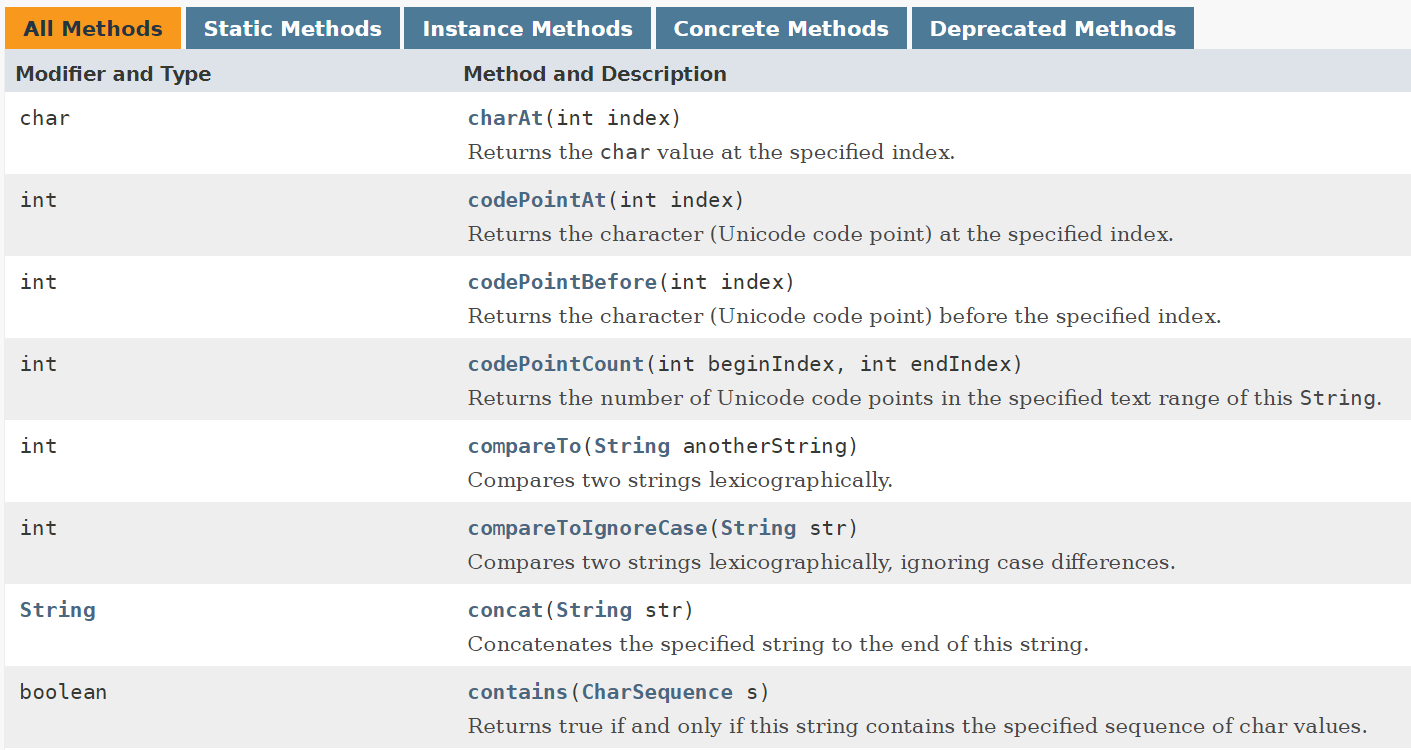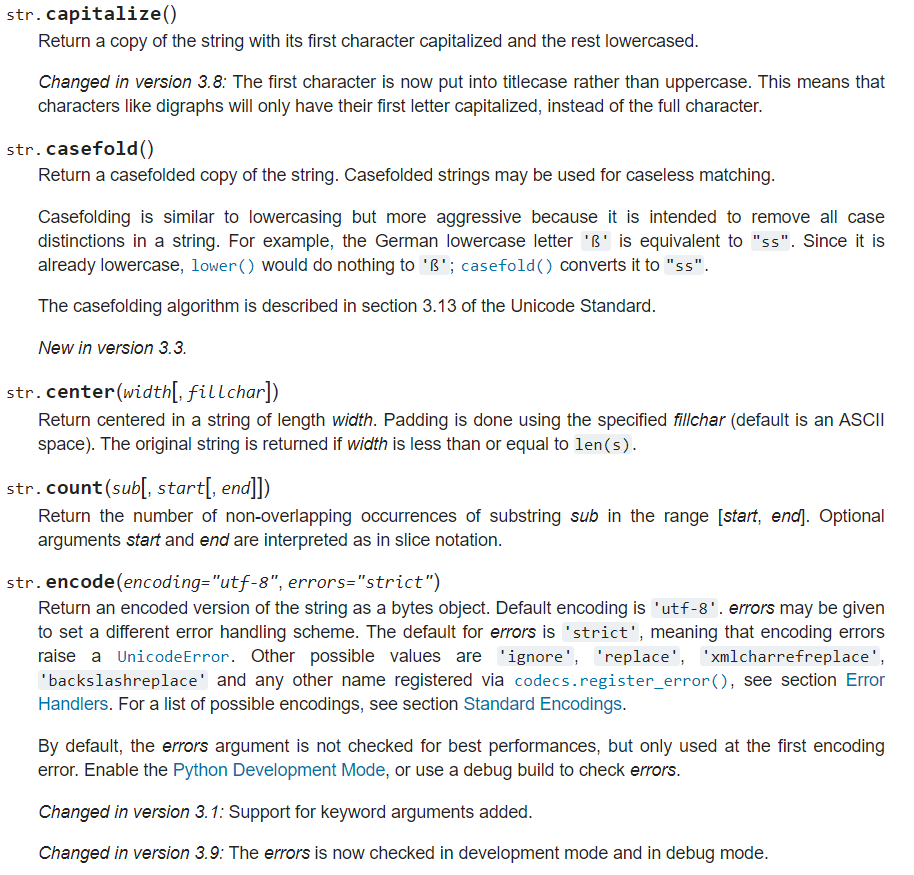Interfaces
If we think back to the concept of message passing in object-oriented languages, it can be useful to think of the collection of public methods available in a class as an interface, i.e., a list of messages you can dispatch to an object created from that class. When you were first learning a language (and probably even now), you find yourself referring to these kinds of lists, usually in the language’s documentation:
Essentially, programmers use these interfaces to determine what methods can be invoked on an object. In other words, which messages can be passed to the object. This interface is determined by the class definition, specifically what methods it contains.
In dynamically typed programming languages, like Python, JavaScript, and Ruby, if two classes accept the same message, you can treat them interchangeably, i.e. if the Kangaroo class and Car class both define a jump() method, you could populate a list with both, and call the jump() method on each:
jumpables = [new Kangaroo(), new Car(), new Kangaroo()]
for jumper in jumpables:
jumper.jump()This is sometimes called duck typing, from the sense that “if it walks like a duck, and quacks like a duck, it might as well be a duck.”
However, for statically typed languages we must explicitly indicate that two types both possess the same message definition, by making the interface explicit. We do this by declaring an interface class, which is a special type of class. For example, an interface for classes that possess a parameter-less jump method might look like this in Java:
interface IJumpable {
void jump();
}In some languages, it is common practice to preface Interface names with the character I. The interface declaration defines an interface - the shape of the messages that can be passed to an object implementing the interface - in the form of a method signature. Note that this signature does not include a body, but instead ends in a semicolon (;). An interface simply indicates the message to be sent, not the behavior it will cause! We can specify as many methods in an interface declaration as we want.
Python Interfaces
On a later page, we’ll discuss how to create a similar structure in Python, which defines the methods that must be implemented by any class that inherits from our interface class. For now, we’ll discuss how interfaces are traditionally implemented in most other object-oriented languages such as Java.
Also note that the method signatures in an interface declaration do not have access modifiers. This is because the whole purpose of defining an interface is to signify methods that can be used by other code. In other words, public access is implied by including the method signature in the interface declaration. In addition, because the methods do not have implementations, they are also abstract as well.
This interface can then be implemented by other classes, usually by listing the interfaces as part of the class declaration. In most languages, a class may implement multiple interfaces. When a class implements an interface, it must define public methods with signatures that match those that were specified by the interface(s) it implements. Here’s an example of a couple of classes implementing the IJumpable interface in Java:
public class Kangaroo implements IJumpable {
public void jump() {
// implement method to jump over a fence here
}
}public class Car implements IJumpable {
public void jump() {
// implement method to jumpstart a car here
}
public void start() {
// implement method to normally start a car here
}
}We can then treat these two disparate classes as though they shared the same type, defined by the IJumpable interface:
List<IJumpable> jumpables = new LinkedList<>();
jumpables.add(new Kangaroo());
jumpables.add(new Car());
jumpables.add(new Kangaroo());
for(IJumpable jumper : jumpables) {
jumper.jump();
}Note that while we are treating the Kangaroo and Car instances as IJumpable instances, we can only invoke the methods defined in the IJumpable interface, even if these objects have other methods. Essentially, the interface represents a new type that can be shared amongst disparate objects in a statically-typed language. The interface definition serves to assure the static type checker that the objects implementing it can be treated as this new type - i.e. the interface provides a mechanism for implementing polymorphism.
We often describe the relationship between the interface and the class that implements it as a is-a relationship, i.e. a Kangaroo is a IJumpable (i.e. a Kangaroo is a thing that can jump). We further distinguish this from a related polymorphic mechanism, inheritance, by the strength of the relationship. We consider interfaces weak is-a connections, as other than the shared interface, a Kangaroo and a Car don’t have much to do with one another.
In Java, like most other object-oriented languages, a class can implement as many interfaces as we want, they just need to be separated by commas, i.e.:
public class Frog implements IJumpable, ICroakable, ICatchFlies {
// method here
}On the next few pages, we’ll look at how to implement interfaces more explicitly in both Java and Python. As always, feel free to read the page for the language you are studying, but it might be useful to review the other page as well. Then, we’ll look at inheritance, which represents a strong is-a relationship.

